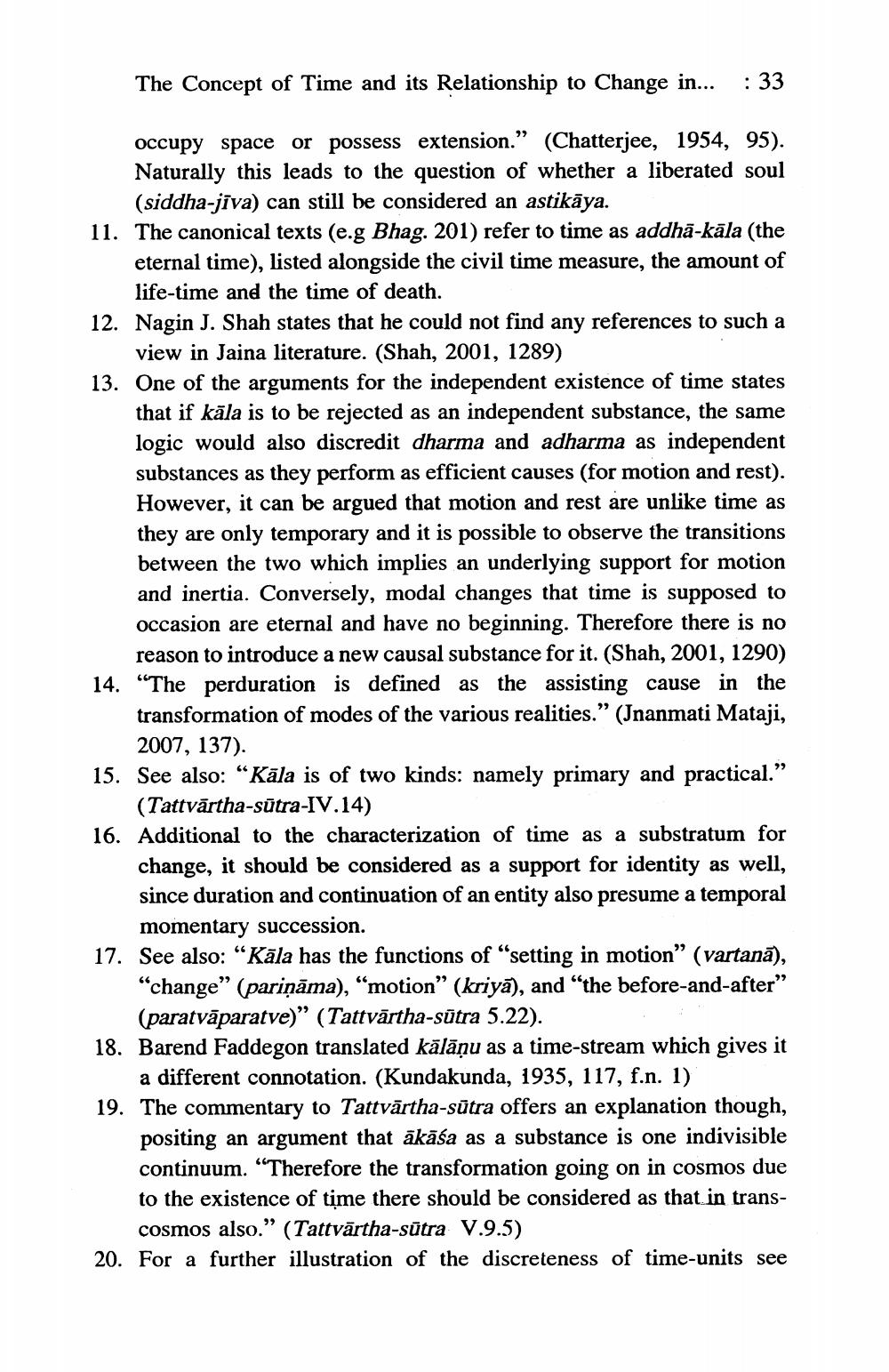________________
The Concept of Time and its Relationship to Change in...
: 33
occupy space or possess extension." (Chatterjee, 1954, 95). Naturally this leads to the question of whether a liberated soul
(siddha-jīva) can still be considered an astikāya. 11. The canonical texts (e.g Bhag. 201) refer to time as addhā-kāla (the
eternal time), listed alongside the civil time measure, the amount of
life-time and the time of death. 12. Nagin J. Shah states that he could not find any references to such a
view in Jaina literature. (Shah, 2001, 1289) 13. One of the arguments for the independent existence of time states
that if kāla is to be rejected as an independent substance, the same logic would also discredit dharma and adharma as independent substances as they perform as efficient causes (for motion and rest). However, it can be argued that motion and rest are unlike time as they are only temporary and it is possible to observe the transitions between the two which implies an underlying support for motion and inertia. Conversely, modal changes that time is supposed to occasion are eternal and have no beginning. Therefore there is no
reason to introduce a new causal substance for it. (Shah, 2001, 1290) 14. "The perduration is defined as the assisting cause in the
transformation of modes of the various realities." (Jnanmati Mataji,
2007, 137). 15. See also: “Kāla is of two kinds: namely primary and practical.”
(Tattvārtha-sūtra-IV.14) 16. Additional to the characterization of time as a substratum for
change, it should be considered as a support for identity as well, since duration and continuation of an entity also presume a temporal
momentary succession. 17. See also: “Kāla has the functions of “setting in motion" (vartanā),
"change" (pariņāma), “motion” (kriyā), and "the before-and-after”
(paratvāparatve)” (Tattvārtha-sūtra 5.22). 18. Barend Faddegon translated kālāņu as a time-stream which gives it
a different connotation. (Kundakunda, 1935, 117, f.n. 1) 19. The commentary to Tattvārtha-sūtra offers an explanation though,
positing an argument that ākāśa as a substance is one indivisible continuum. "Therefore the transformation going on in cosmos due to the existence of time there should be considered as that in trans
cosmos also.” (Tattvārtha-sūtra V.9.5) 20. For a further illustration of the discreteness of time-units see




